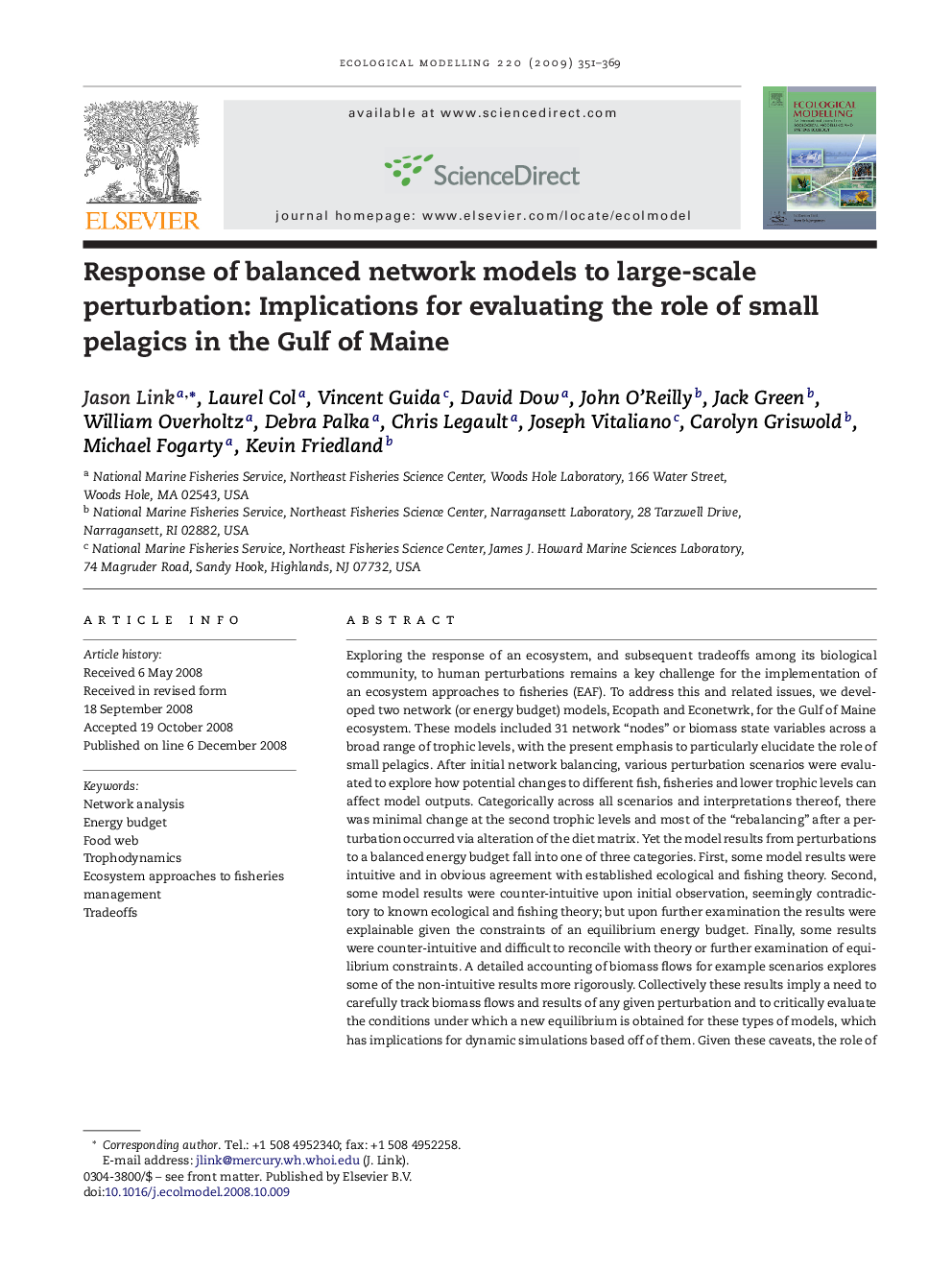| Article ID | Journal | Published Year | Pages | File Type |
|---|---|---|---|---|
| 4378288 | Ecological Modelling | 2009 | 19 Pages |
Exploring the response of an ecosystem, and subsequent tradeoffs among its biological community, to human perturbations remains a key challenge for the implementation of an ecosystem approaches to fisheries (EAF). To address this and related issues, we developed two network (or energy budget) models, Ecopath and Econetwrk, for the Gulf of Maine ecosystem. These models included 31 network “nodes” or biomass state variables across a broad range of trophic levels, with the present emphasis to particularly elucidate the role of small pelagics. After initial network balancing, various perturbation scenarios were evaluated to explore how potential changes to different fish, fisheries and lower trophic levels can affect model outputs. Categorically across all scenarios and interpretations thereof, there was minimal change at the second trophic levels and most of the “rebalancing” after a perturbation occurred via alteration of the diet matrix. Yet the model results from perturbations to a balanced energy budget fall into one of three categories. First, some model results were intuitive and in obvious agreement with established ecological and fishing theory. Second, some model results were counter-intuitive upon initial observation, seemingly contradictory to known ecological and fishing theory; but upon further examination the results were explainable given the constraints of an equilibrium energy budget. Finally, some results were counter-intuitive and difficult to reconcile with theory or further examination of equilibrium constraints. A detailed accounting of biomass flows for example scenarios explores some of the non-intuitive results more rigorously. Collectively these results imply a need to carefully track biomass flows and results of any given perturbation and to critically evaluate the conditions under which a new equilibrium is obtained for these types of models, which has implications for dynamic simulations based off of them. Given these caveats, the role of small pelagics as a prominent component of this ecosystem remains a robust conclusion. We discuss how one might use this approach in the context of further developing an EAF, recognizing that a more holistic, integrated perspective will be required as we continue to evaluate tradeoffs among marine biological communities.
